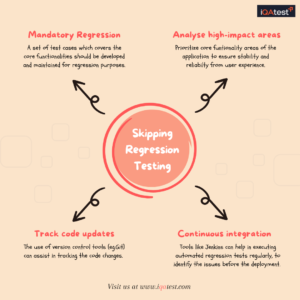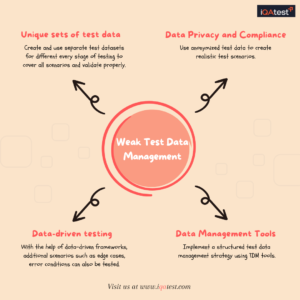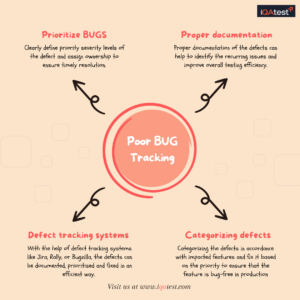A quick delivery of high-quality and user-friendly products is very essential in the fast-paced world for start-ups. Yet in the haste to deliver the products, many companies tend to ignore few key aspects of Quality Assurance (QA), which later results in bugs that upset the user experience, security, and performance. Well planned and efficient QA approach can speed up development, minimise errors, and boost customer satisfaction. Now let’s look at the common QA testing mistakes that startups make, which also includes the tips on how it can be prevented.
Ignoring Test Automation
Due to lack of experience, financial limitations, or time limits, many businesses use only manual testing. Even though manual testing is important, depending only on it may result in inconsistent and dragging releases. To keep up with the rapid pace in development cycles and on time delivery, it is advisable to invest some time in test automation.
Tips to Avoid It: Automating the test cases that are executed repeatedly can free up manual testers to perform exploratory testing, which in turn will increase the test coverage areas. It is better to choose an appropriate test automation framework according to the business requirements.

Poor Testing Processes
Some startups start with the QA testing process without planning a well-prepared testing process. This will result in improper test coverage, unidentified defects, and delays in the releases. The absence of test planning results in improper distribution of efforts and critical defects occurring during production.
Tips to Avoid It: Start with planning an apt QA strategy for testing scope, execution, and documentation. It is recommended to create test cases in detail, and conduct frequent code reviews. It is also important to go through the acceptance criteria for each and every functionality before testing.

Skipping Regression Testing
Startups will usually skip regression testing either due to timelines or in an assumption that new updates might not impact the existing functionalities. This can lead to unexpected defects occurring in production, which will affect the user experience and credibility in a negative way.
Tips to Avoid It: Every release cycle has to start with regression testing. A set of test cases which covers the core functionalities should be developed and maintained for regression purposes. Continuous integration tools (eg.Jenkins) can help in executing automated regression tests regularly, to identify the issues before the deployment. The use of version control tools (eg.Git) can assist in tracking the code changes.

Weak Test Data Management
Poor management of the test data can result in unreliable test results, which makes it hard to replicate the defects and fix the code. The usage of outdated test data or data which is created manually will usually lack real world complexity.
Tips to Avoid It: An organized test data management strategy must be followed. Create and use separate test datasets for different every stage of testing to cover all scenarios and validate properly. With the help of data-driven frameworks, additional scenarios such as edge cases, error conditions can also be tested.

Poor Bug Tracking
Some startups track bugs in an informal way either through chats or spreadsheets without following a proper defect management system. It leads to an unorganized defect management, occurrence of duplicate records of the issues, and critical bugs not getting resolved in time.
Tips to Avoid It: With the help of defect tracking systems like Jira, Rally, or Bugzilla, the defects can be documented, prioritised and fixed in an efficient way. The severity levels of the bug have to be mentioned clearly in order to ensure a timely resolution. Proper documentation of the defects can help to identify the recurring issues and improve overall testing efficiency.

Additional QA Best Practices for Startups
In spite of reducing these common errors, it is advisable for the startups to invest more in continuous learning and improvement. Few more key points to keep in mind during QA process:
- Early Testing Approach: Planning the QA processes as early as possible in the development phase can aid in identifying defects sooner and reduce costly fixes.
- Collaboration between QA and Developers: A proper communication between the QA and Developers can be useful in understanding the issues and improvements if required. This in turn will enhance the quality of code.
- Enhanced Test Strategies: Plan and update the testing strategies followed based on the project needs and customer feedback.
- Exploratory and Adhoc Testing: These methods can help to uncover the bugs which were not covered during the testing scope.
Conclusion
The stability and reliability of a product delivery can be ensured by avoiding the common QA errors. Startups will be able to develop user-friendly, robust applications by engaging with test automation, adapting effective testing procedures, prioritizing regression, structured storage of test data, and proper bug tracking.
Keep an eye out for an upcoming tool being developed by us!! This tool mainly focuses on QA for startups. Our key agenda is to increase software quality and expedite testing procedures. Stay tuned for more information.